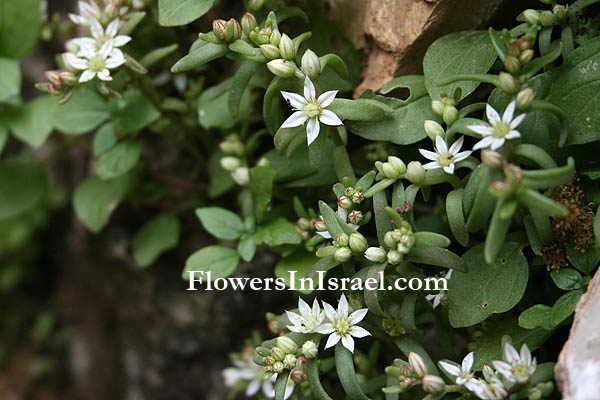Hebrew: צורית בלוטית, Arabic: عرف الديك
| Scientific name: | Sedum rubens L. | |
| Synonym name: | Sedum pallidum auct. non M.Bieb. | |
| Common name: | Red stonecrop | |
| Hebrew name: | צורית בלוטית | |
| Arabic name: | عرف الديك | |
| Family: | Crassulaceae, Stonecrop Family, טבוריתיים |

|
| Life form: | Therophyte, annual | |
| Succulence: | Leaf succulent | |
| Stems: | Branched, pubescent, decumbent | |
| Leaves: | Alternate, cylindrical or terete, succulent | |
| Flowers: | Pink, Purple, White | |
| Fruits: | Follicles, seeds elliptic obovate, transverse section circular, apex rounded, base confluent, obtuse; surface longitudinal furrowed, slight lustrous, pale brown | |
| Flowering Period: | March, April | |
| Habitat: | Hard rock outcrops | |
| Distribution: | Mediterranean Woodlands and Shrublands, Semi-steppe shrublands, Shrub-steppes, Deserts and extreme deserts, Montane vegetation of Mt. Hermon | |
| Chorotype: | Med - Euro-Siberian | |
| Summer shedding: | Ephemeral |

Derivation of the botanical name: Sedum, Latin sedo, "to sit," in reference to the manner in which some species attach themselves to stones or walls. rubens, red. pallidum, pale. The Hebrew name: צורית, zurit, tzurit, for sedum, stonecrop.
|